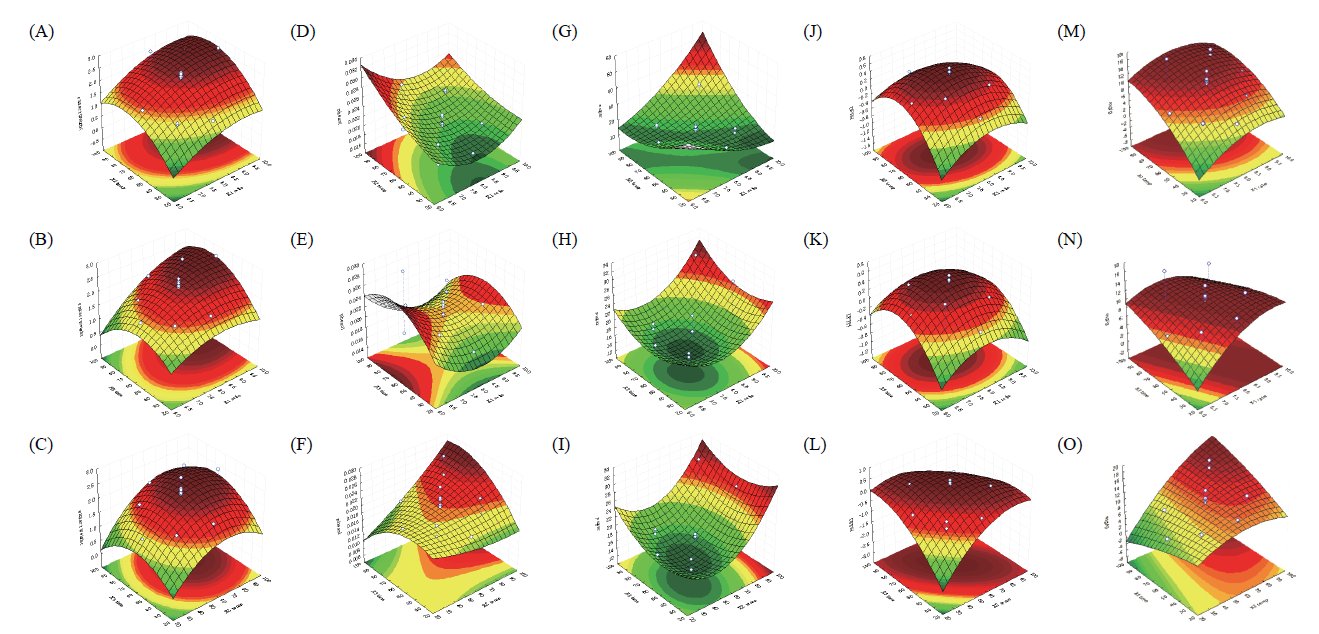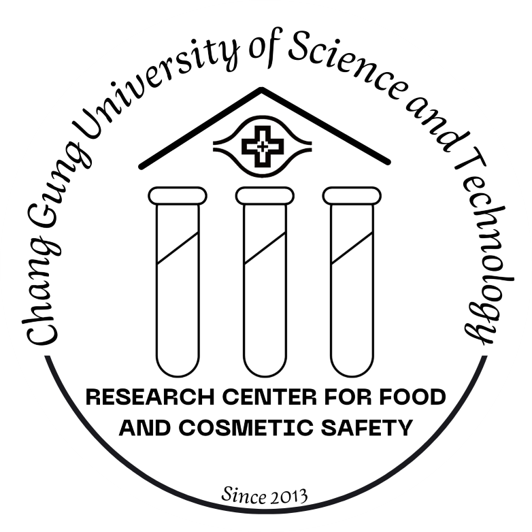Influence of Multi-Frequency Ultrasound with Response Surface Methodology on Chemical Composition and Anti-Oxidative Capacity of Salvia miltiorrhiza Stems and Leaves Extracted Using Different Solvents

圖文摘要說明
本圖採用反應曲面法(Response Surface Methodology, RSM)這一先進的統計優化技術,深入探究了在超音波輔助萃取(Ultrasound-Assisted Extraction, UAE)丹參莖葉水提物的複雜過程中,各項關鍵操作參數之間的交互作用及其對最終產物品質的影響。具體而言,圖像詳細描繪了溶劑比例、提取溫度和提取時間這三個核心變數如何協同作用,共同決定了提取收率、總多酚含量、總糖含量、DPPH自由基清除率以及主要生物活性成分丹參酸B的最終表現。每一組三維曲面圖(如A, B, C代表萃取收率的變化)都清晰地展示了兩兩變數在不同條件下的響應趨勢,例如特定溶劑比例與溫度的組合如何影響提取效率或活性物質的保留,從而為丹參莖葉水提物的工業化生產提供了關鍵的優化參數和理論依據。
Abstract
Multi-frequency ultrasound exhibits a more pronounced cavitation effect compared to singlefrequency ultrasound, and has been applied in various fields within the food industry. One important application is the extraction of natural compounds. The roots of Salvia miltiorrhiza (SM) are traditionally used to promote blood circulation, relieve pain, and regulate menstruation, and its otherwise discarded stems and leaves have recently garnered interest for bioactive properties. These by-products have demonstrated anti-oxidative activity and potential in preventing cardiovascular diseases, alleviating hepatitis, and regulating diabetes mellitus. Salvianolic acid B, a major phenolic compound, serves as a key bioactive marker. In this study, a multi-frequency ultrasound-assisted extraction technique was employed to extract bioactive compounds from SM stems and leaves. Extraction parameters, including solvent-to-sample ratio (v/w), temperature, and time, were optimized by response surface methodology to evaluate their influence on chemical composition and antioxidant activity. The extraction efficiency was assessed using an indicator, salvianolic acid B. Results indicated that the aqueous extract of SM stems and leaves (SMW) yielded a higher extraction efficiency compared to ethanolic or acetone extracts and exhibited superior 1,1-diphenyl-2-picrylhydrazyl (DPPH) radical scavenging activity. Under the condition of a 7-fold volume of water at 80 °C for 80 min, SMW contained 16.7 mg/g of salvianolic acid B. With further validation and standardization of these extraction conditions, this approach shows great potential for future development and application.
Keywords:multi-frequency ultrasound, Salvia miltiorrhiza stems and leaves, response surface methodology, anti-oxidative, salvianolic acid B
摘 要
複頻超音波 (multi-frequency ultrasound) 與單頻相比具有較顯著的空穴效應 (cavitation effect),已被運用在食品工業相關領域,天然物萃取是重要的應用方向與項目。丹參 (Salvia miltiorrhiza , SM) 藥用部位為根部,可祛瘀、止痛、通經,然近年被發現莖、葉等廢棄物具有抗氧化 (anti-oxidative)、預防心血管疾病 (cardiovascular disease, CVD)、減緩肝炎 (hepatitis)、調節糖尿病 (diabetes mellitus, DM) 等活性,其中丹參酚酸 B (salvianolic acid B) 是重要的指標成分。本研究利用複頻超音波輔助萃取丹參莖葉,透過反應曲面法 (response surface methodology, RSM)設計不同萃取溶劑倍數、時間與溫度等條件組合,探討其中化學組成與抗氧化活性間之關係,並以丹參酚酸 B 為指標探討其萃取效能。結果顯示,丹參莖葉水萃取物 (water extract of SM stemsand leaves, SMW) 之收率較酒精或丙酮萃取者高,且1,1- 二苯基-2- 三硝基苯肼 (1,1-diphenyl-2-picrylhydrazyl, DPPH) 自由基清除效能相對優越,其中以7 倍的水於80℃ 下萃取80 分鐘可獲得含有16.7 mg/g 丹參酚酸 B 之SMW,如將該等條件與萃取物規格確認,未來將具有高度發展的潛力。
關鍵詞:複頻超音波、丹參莖葉、反應曲面法、抗氧化、丹參酚酸B

